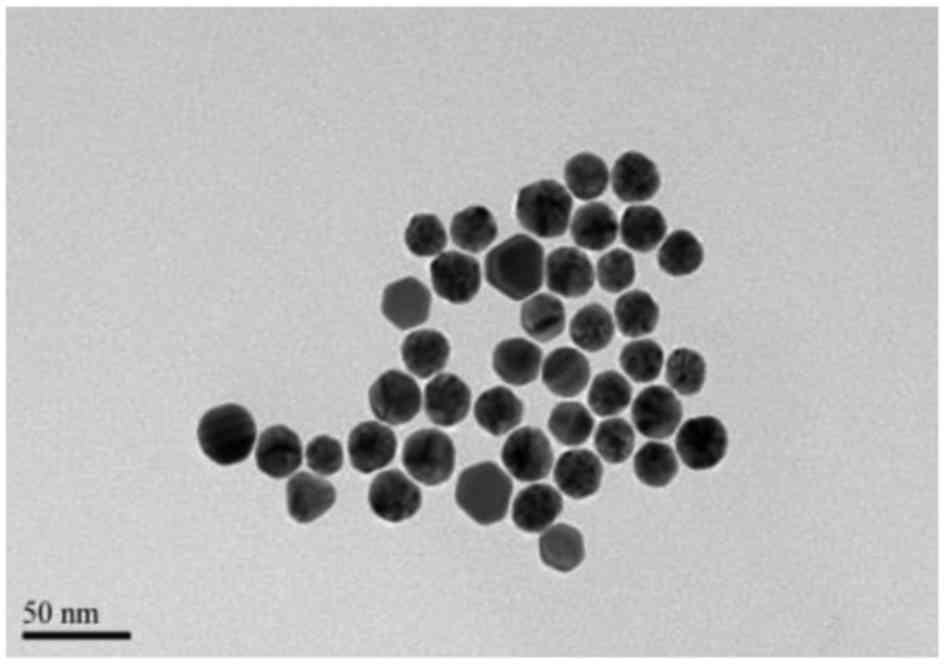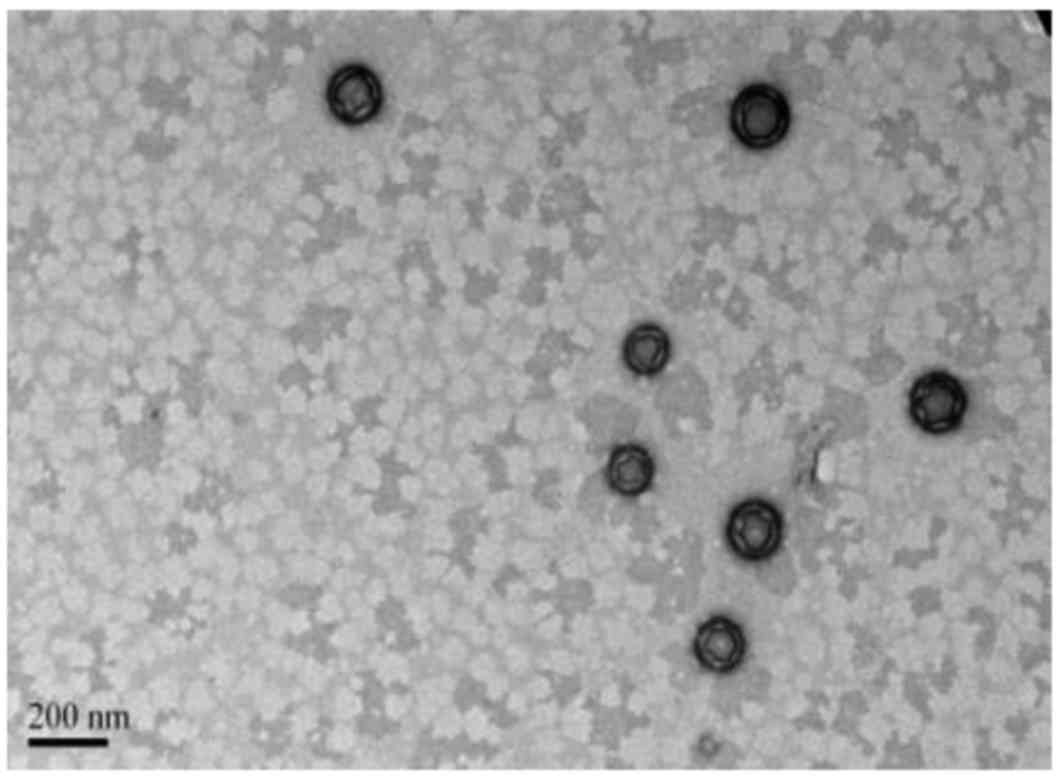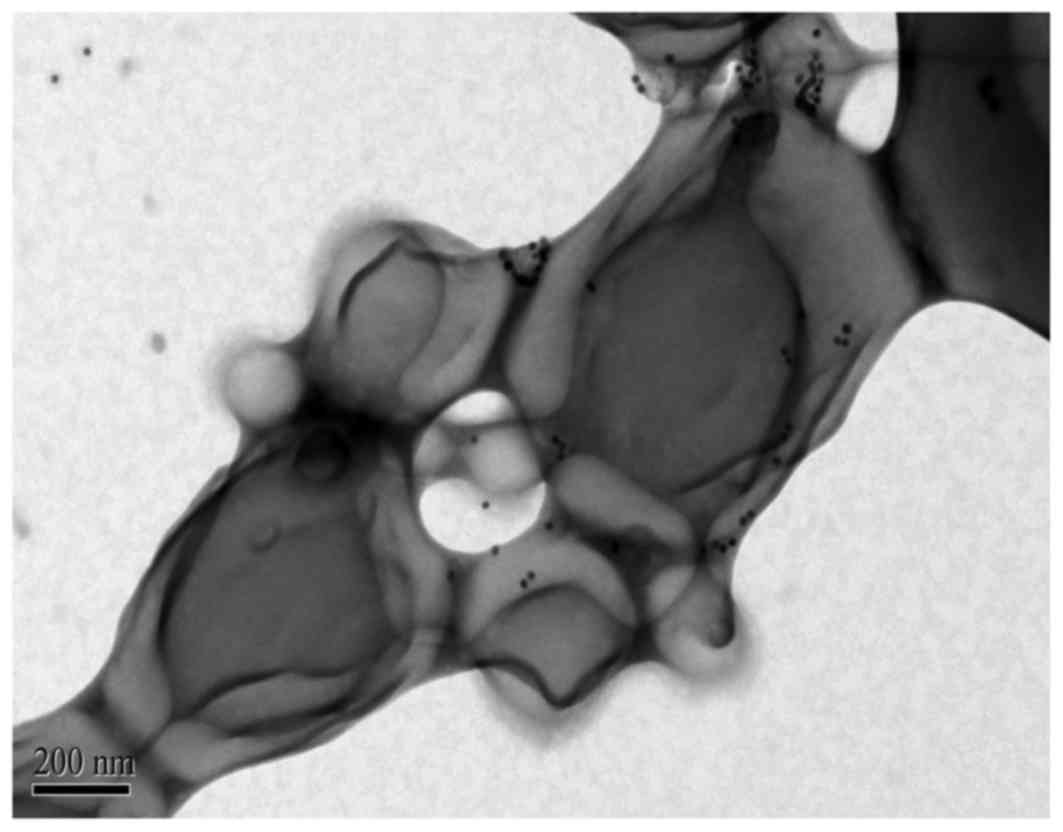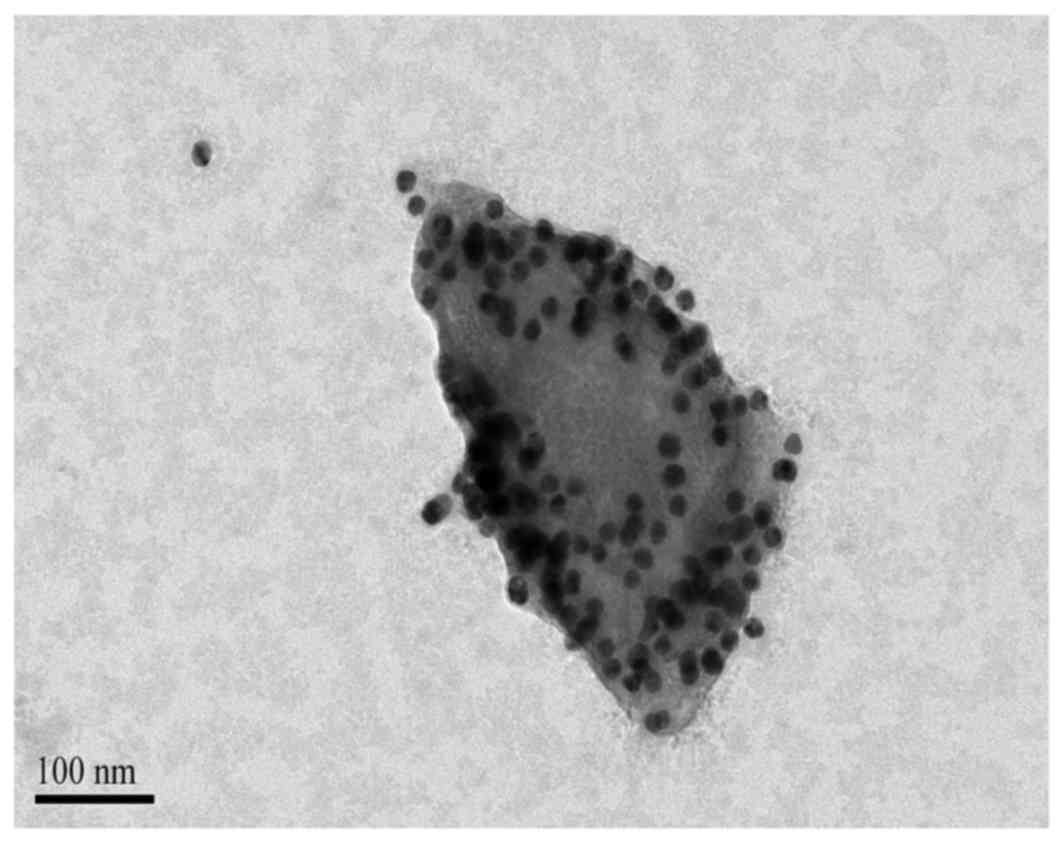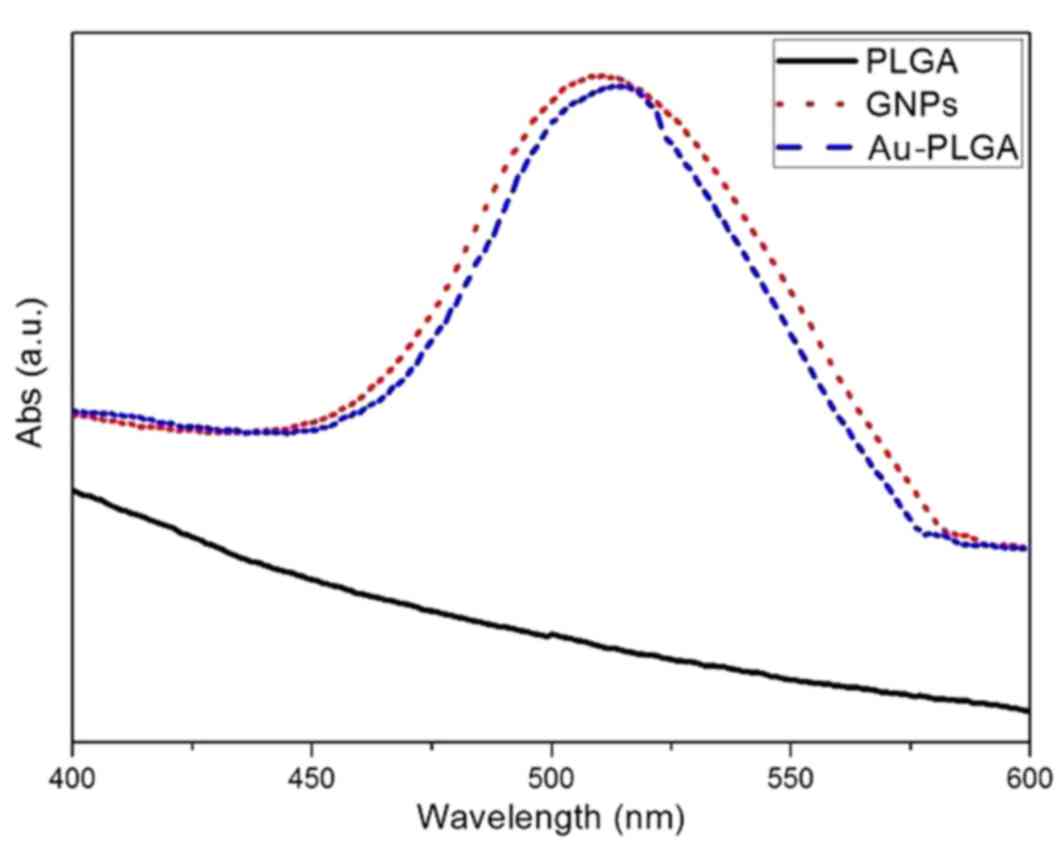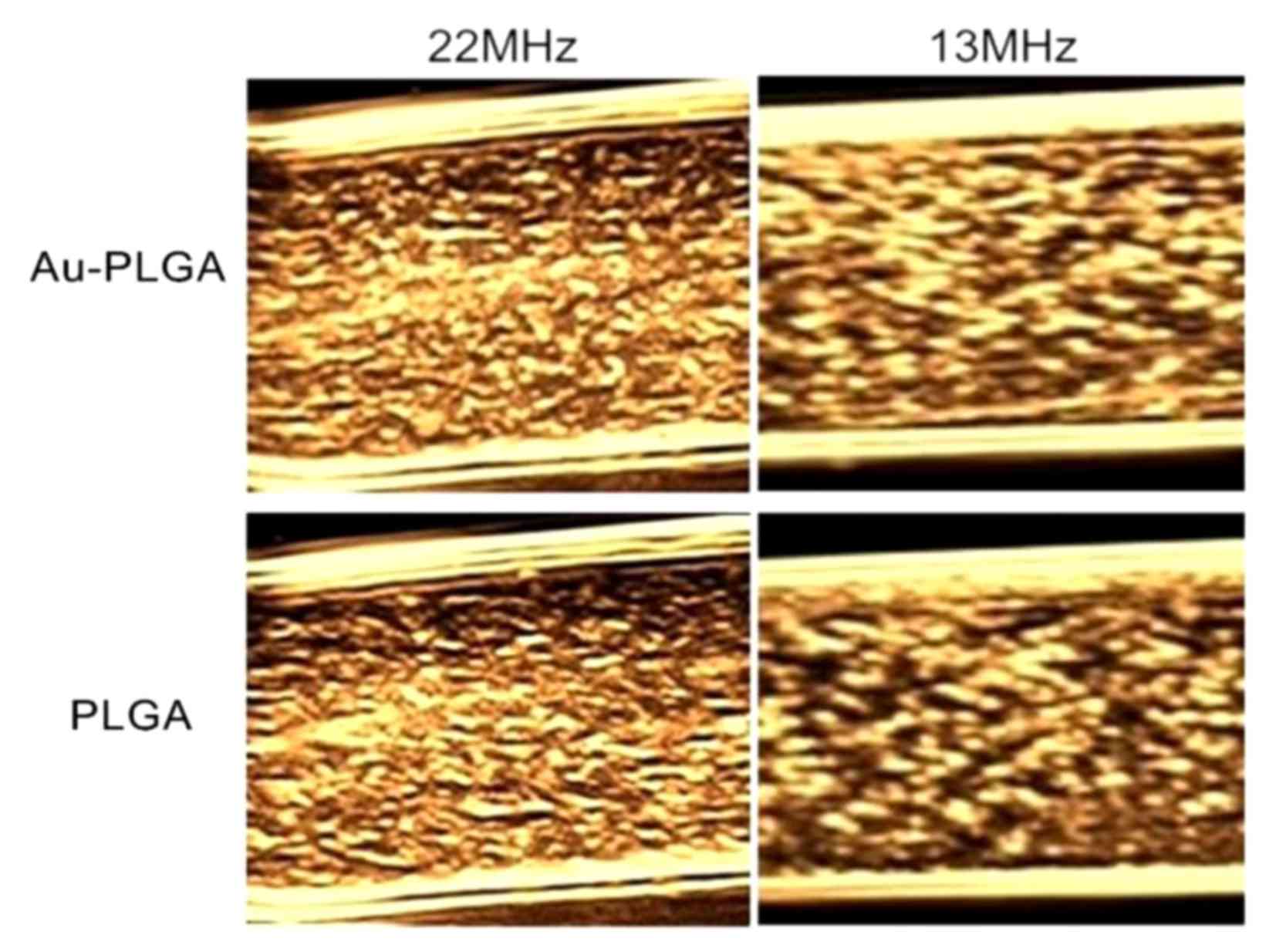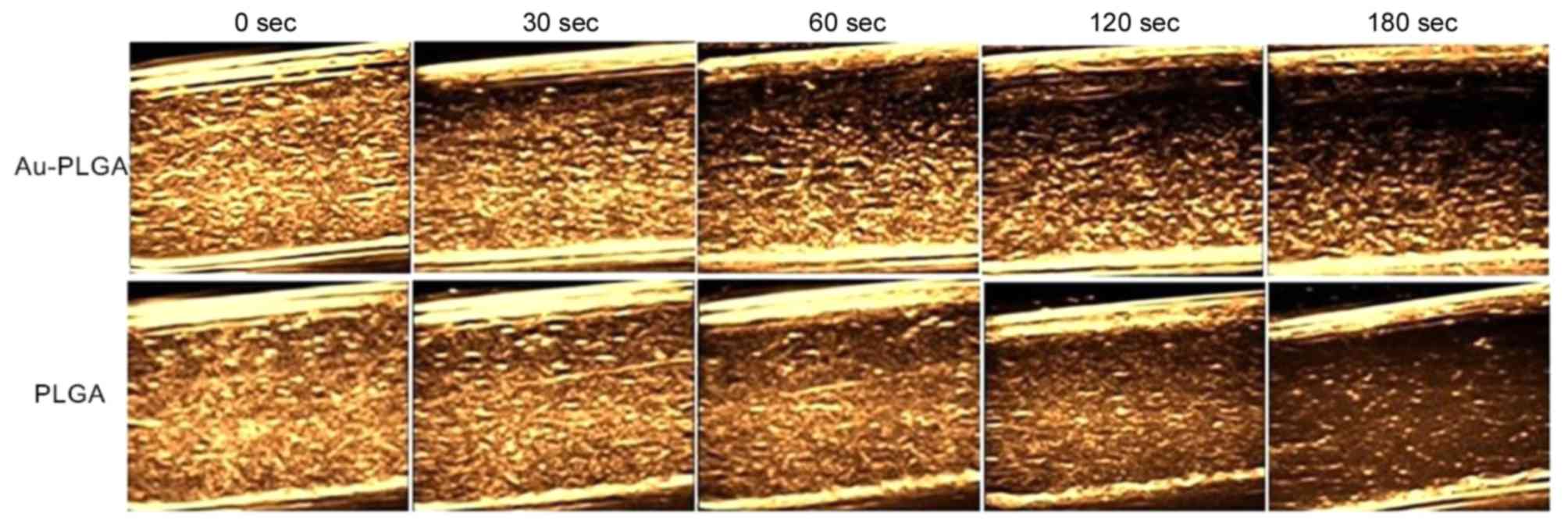|
1
|
Khlebtsov N, Bogatyrev V, Dykman L,
Khlebtsov B, Staroverov S, Shirokov A, Matora L, Khanadeev V,
Pylaev T, Tsyganova N and Terentyuk G: Analytical and theranostic
applications of gold nanoparticles and multifunctional
nanocomposites. Theranostics. 3:167–180. 2013. View Article : Google Scholar : PubMed/NCBI
|
|
2
|
Jain S, Hirst DG and O'sullivan JM: Gold
nanoparticles as novel agents for cancer therapy. Br J Radiol.
85:101–113. 2012. View Article : Google Scholar : PubMed/NCBI
|
|
3
|
Kim BY, Rutka JT and Chan WC:
Nanomedicine. N Engl J Med. 363:2434–2443. 2010. View Article : Google Scholar : PubMed/NCBI
|
|
4
|
Yeh YC, Creran B and Rotello VM: Gold
nanoparticles: Preparation, properties, and applications in
bionanotechnology. Nanoscale. 4:1871–1880. 2012. View Article : Google Scholar : PubMed/NCBI
|
|
5
|
Song KH, Kim C, Maslov K and Wang LV:
Noninvasive in vivo spectroscopic nanorod-contrast photoacoustic
mapping of sentinel lymph nodes. Eur J Radiol. 70:227–231. 2009.
View Article : Google Scholar : PubMed/NCBI
|
|
6
|
Néstor MM, Kei NP, Guadalupe NA, Elisa ME,
Adriana GQ and David QG: Preparation and in vitro evaluation of
poly(D, L-lactide-co-glycolide) air-filled nanocapsules as a
contrast agent for ultrasound imaging. Ultrasonics. 51:839–845.
2011. View Article : Google Scholar : PubMed/NCBI
|
|
7
|
Kohl Y, Kaiser C, Bost W, Stracke F,
Fournelle M, Wischke C, Thielecke H, Lendlein A, Kratz K and Lemor
R: Preparation and biological evaluation of multifunctional
PLGA-nanoparticles designed for photoacoustic imaging.
Nanomedicine. 7:228–237. 2011. View Article : Google Scholar : PubMed/NCBI
|
|
8
|
Xu JS, Huang J, Qin R, Hinkle GH, Povoski
SP, Martin EW and Xu RX: Synthesizing and binding dual-mode
poly(lactic-co-glycolic acid) (PLGA) nanobubbles for cancer
targeting and imaging. Biomaterials. 31:1716–1722. 2010. View Article : Google Scholar : PubMed/NCBI
|
|
9
|
Ke H, Wang J, Dai Z, Jin Y, Qu E, Xing Z,
Guo C, Yue X and Liu J: Gold-nanoshelled microcapsules: A
theranostic agent for ultrasound contrast imaging and photothermal
therapy. Angew Chem Int Ed Engl. 50:3017–3021. 2011. View Article : Google Scholar : PubMed/NCBI
|
|
10
|
Xu RX, Huang J, Xu JS, Sun D, Hinkle GH,
Martin EW and Povoski SP: Fabrication of indocyanine green
encapsulated biodegradable microbubbles for structural and
functional imaging of cancer. J Biomed Opts. 14:0340202009.
View Article : Google Scholar
|
|
11
|
Frens G: Controlled nucleation for the
regulation of the particle size in monodisperse gold suspensions.
Nature. 241:20–22. 1973.
|
|
12
|
Horisberger M and Rosset J: Colloidal
gold, a useful marker for transmission and scanning electron
microscopy. J Histochem Cytochem. 25:295–305. 1977. View Article : Google Scholar : PubMed/NCBI
|
|
13
|
Cózar-Bernal MJ, Holgado MA, Arias JL,
Muñoz-Rubio I, Martín-Banderas L, Alvarez-Fuentes J and
Fernández-Arévalo M: Insulin-loaded PLGA microparticles: Flow
focusing versus double emulsion/solvent evaporation. J
Microencapsul. 28:430–441. 2011. View Article : Google Scholar : PubMed/NCBI
|
|
14
|
Shive MS and Anderson JM: Biodegradation
and biocompatibility of PLA and PLGA microspheres. Adv Drug Deliv
Rev. 28:5–24. 1997. View Article : Google Scholar : PubMed/NCBI
|
|
15
|
Wang CW, Yang SP, Hu H, Du J and Li FH:
Synthesis, characterization and in vitro and in vivo investigation
of C3F8-filled poly(lactic-co-glycolic acid)
nanoparticles as an ultrasound contrast agent. Mol Med Rep.
11:1885–1890. 2015. View Article : Google Scholar : PubMed/NCBI
|
|
16
|
Cho SH, Kim JY and Kim JD: Dynamic surface
tension of stable air-filled microbubbles prepared by freeze-drying
a solution of lipid/surfactant mixture. Colloids and Surfaces A
Physicochemical and Engineering Aspects. 284–285, 1-457. 2006.
|
|
17
|
Ma XY, Pan GM, Lu Z, Hu JS, Bei JZ, Jia JH
and Wang SG: Preliminary study of oral polylactide microcapsulated
insulin in vitro and in vivo. Diabetes Obes Metab. 2:243–250. 2000.
View Article : Google Scholar : PubMed/NCBI
|
|
18
|
Kumari A, Yadav SK and Yadav SC:
Biodegradable polymeric nanoparticles based drug delivery systems.
Colloids Surf B Biointerfaces. 75:1–18. 2010. View Article : Google Scholar : PubMed/NCBI
|
|
19
|
Piñón-Segundo E, Nava-Arzaluz MG and
Lechuga-Ballesteros D: Pharmaceutical polymeric nanoparticles
prepared by the double emulsion-solvent evaporation technique.
Recent Pat Drug Deliv Formul. 6:224–235. 2012. View Article : Google Scholar : PubMed/NCBI
|
|
20
|
Li XY, Yang ZL and Zhou HG: Studying the
absorption spectrum properties of the gold nanosphere-The effect of
the size on the absorption spectra of the anoparticles. J Zhangzhou
Teachers Coll (Nat Sci). 17:31–34. 2004.
|
|
21
|
Yuan F, Dellian M, Fukumura D, Leunig M,
Berk DA, Torchilin VP and Jain RK: Vascular permeability in a human
tumor xenograft: Molecular size dependence and cutoff size. Cancer
Res. 55:3752–3756. 1995.PubMed/NCBI
|
|
22
|
Koo OM, Rubinstein I and Onyuksel H: Role
of nanotechnology in targeted drug delivery and imaging: A concise
review. Nanomedicine. 1:193–212. 2005. View Article : Google Scholar : PubMed/NCBI
|
|
23
|
Panchapakesan B and Wickstrom E:
Nanotechnology for sensing, imaging, and treating cancer. Surg
Oncol Clin N Am. 16:293–305. 2007. View Article : Google Scholar : PubMed/NCBI
|



